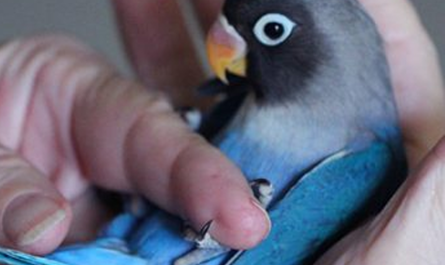Introduction
Fischer’s lovebirds are small, colorful parrots known for their expressive vocalizations. Like most birds, they rely on sounds to communicate a wide range of emotions, needs, and social behaviors. However, the way Fischer’s lovebirds communicate in the wild is different from how they vocalize in captivity. Understanding these differences can help bird owners better interpret their pet’s behavior and foster a healthier, happier environment for them.
Fischer’s Lovebird Sounds in the Wild
In their natural habitat, Fischer’s lovebirds live in flocks. This social structure plays a huge role in how they communicate. Here’s how lovebirds use sound in the wild:
- Warning Calls
- In the wild, Fischer’s lovebirds are alert to predators. Their high-pitched warning calls alert other members of the flock to danger, signaling the need to fly or hide.
- Mating Calls
- During mating season, male lovebirds often use soft chirps and melodious sounds to attract mates. These calls help establish bonds and communicate readiness for breeding.
- Contact Calls
- Fischer’s lovebirds maintain constant communication with their flock. Contact calls are short, repetitive chirps that allow birds to stay in touch with one another while flying or foraging for food. This helps the flock stay united in the vast landscape.
- Territorial Sounds
- Like many wild birds, Fischer’s lovebirds defend their territory using vocalizations. Loud, repetitive squawks can signal a challenge to an intruder or establish dominance within the flock.
Fischer’s Lovebird Sounds in Captivity
In captivity, Fischer’s lovebirds are often kept alone or in small groups. While they retain many of their natural vocal behaviors, the context and frequency of these sounds can change due to their environment:
- Attention-Seeking Calls
- Captive lovebirds often develop attention-seeking behavior. When they feel lonely or bored, they may chirp or squawk loudly to get the attention of their owners. This behavior mimics their need for flock interaction in the wild.
- Mimicking Environmental Sounds
- Fischer’s lovebirds in captivity may begin mimicking sounds from their surroundings, such as phone rings, doorbells, or even human voices. This is less common in the wild, where they primarily focus on natural calls.
- Bonding and Affection Sounds
- Lovebirds in captivity often bond closely with their owners or other birds. They may use soft, melodious sounds to express affection, much like their mating calls in the wild.
- Stress and Distress Calls
- A lovebird in captivity might make distress calls if it feels threatened or uncomfortable. These high-pitched, frantic sounds can indicate fear, discomfort, or anxiety, especially if the bird is in a new environment or feels unsafe.
Why Do Fischer’s Lovebird Sounds Change in Captivity?
The change in Fischer’s lovebird communication patterns between the wild and captivity comes down to their environment and social structure. In the wild, their sounds are largely survival-based, helping them stay connected to their flock and avoid predators. In captivity, however, their flock is often replaced by human interaction or a much smaller group of birds. This can lead to more frequent attention-seeking vocalizations or even mimicry of sounds in their home.
How to Respond to Your Captive Fischer’s Lovebird Sounds
- Recognize Attention-Seeking Behavior
- If your Fischer’s lovebird is making noise to get your attention, make sure you’re providing enough mental stimulation. Rotate toys, introduce new challenges, and spend time interacting with your bird.
- Comfort Your Bird in Stressful Situations
- If your bird makes distress calls, check for potential stressors like loud noises, unfamiliar people, or sudden changes in their environment. Offering a calm, safe space can help reduce anxiety.
- Encourage Natural Vocalization
- While lovebirds in captivity may mimic sounds, encouraging their natural vocalization through socialization with other birds or regular interaction with you can help them feel more at ease and connected.
Conclusion
Fischer’s lovebirds communicate differently in the wild compared to captivity due to the changing dynamics of their environment. In the wild, their sounds are primarily survival-driven, while in captivity, these vocalizations shift toward seeking attention, expressing affection, or mimicking sounds. By understanding your lovebird’s vocalizations and responding appropriately, you can create a happy and enriching environment for your feathered companion.
Share this content:




